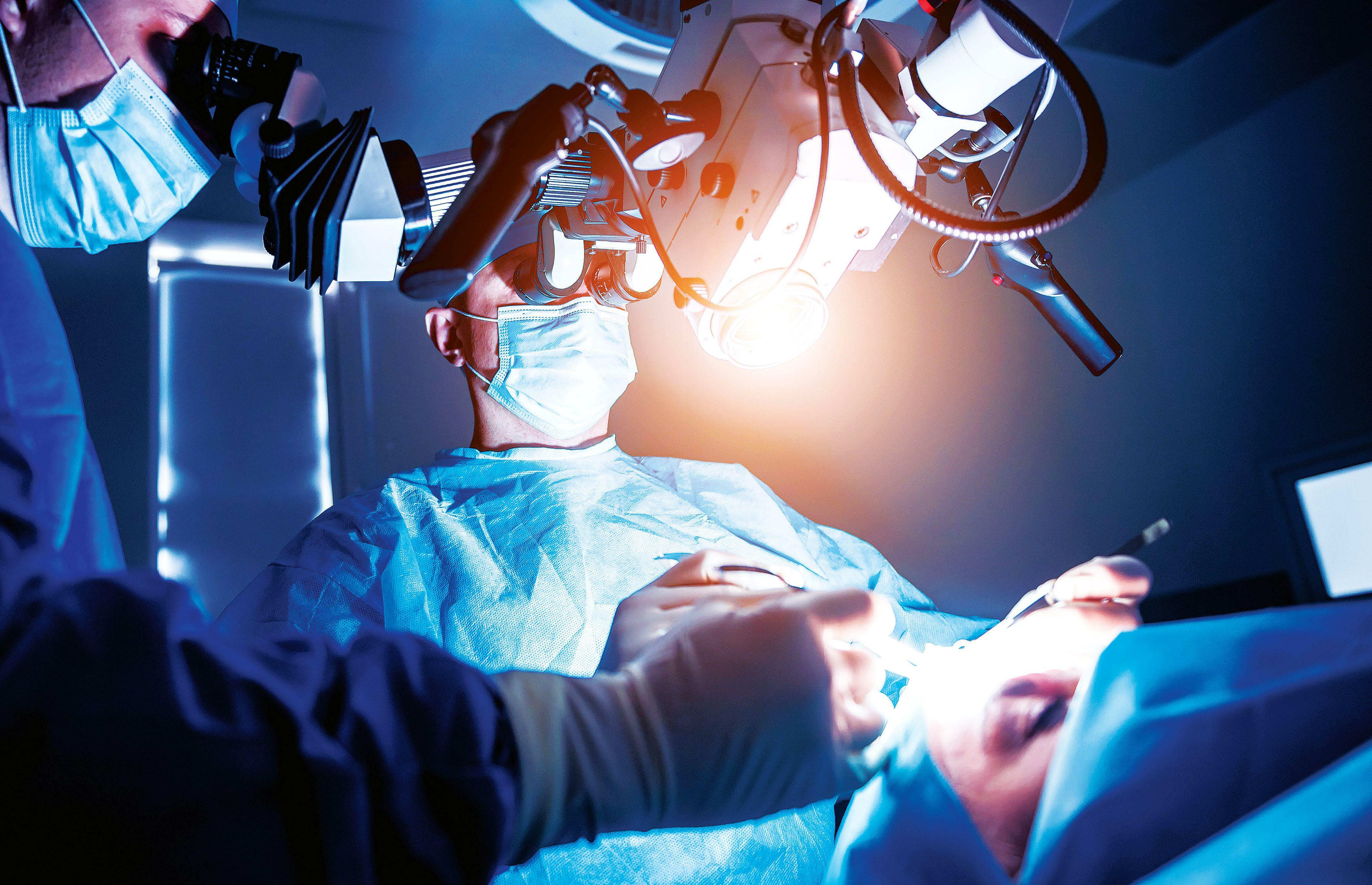
Brain surgery encompasses a myriad of procedures designed to treat an equally diverse set of conditions and associated symptoms, including tumours, blood clots, epilepsy and aneurysms. Neurosurgeries can range from minimally invasive procedures such as a biopsy, whereby a needle is inserted into the brain to collect cells for analysis, to extensive operations that expose the brain to treat blood clots and for tumour removal.
Like any other tumour, a brain tumour is an abnormal mass of cells and tissue that wedges itself somewhere in the brain. There are two categories of tumour: benign and malignant. While benign tumours can grow large, albeit slowly, they don't typically invade surrounding tissue or spread around the body. A malignant tumour, on the other hand, grows much faster, invades other tissue and can spread around the body. All in all, 120 different types of tumour can form in the brain alone.
For both benign and malignant brain tumours, a common course of intervention is a craniotomy and resection, whereby a surgeon removes a portion of the skull to expose the brain and hopefully cut away the tumour. To help guide them through the brain and keep tabs on where surgical instruments are during operations, surgeons use neuronavigation systems that are connected to their equipment.
"One of the biggest challenges is distinguishing between normal brain tissue and tumour tissue, which requires extensive training and experience," says Pietro D'Urso, a consultant neurosurgeon at Salford Royal Hospital in Manchester. "The location of the tumour is another big challenge, particularly if a tumour is in very important parts of the brain, called 'eloquent areas', that control speech and motor functions."
This story is from the Issue 192 edition of How It Works UK.
Start your 7-day Magzter GOLD free trial to access thousands of curated premium stories, and 9,000+ magazines and newspapers.
Already a subscriber ? Sign In
This story is from the Issue 192 edition of How It Works UK.
Start your 7-day Magzter GOLD free trial to access thousands of curated premium stories, and 9,000+ magazines and newspapers.
Already a subscriber? Sign In

THE POWER OF WATER
We're hooked on fossil fuels. But hydroelectric power is becoming an increasingly important replacement for coal and oil

EXPLORING THE MOON'S CAVES
Earth's rocky neighbour is home to a network of unexplored caves, and scientists are keen to take a peek inside

HOW TO ELECT THE PRESIDENT
The campaigns, votes and elections that put someone in America's most powerful office

WHAT IS MORNING SICKNESS?
Why some pregnancies can cause nausea and vomiting

20 WEIRDEST SCIENCE MYSTERIES
From dark matter to deep-sea crabs, science still can't fully explain these strange quirks of nature

THE TRIANGULUM GALAXY SHINES IN A NEW HUBBLE IMAGE
A nearby galaxy is shining with star formation in a new image from the Hubble Space Telescope.

The world's fastest charger fully powers smartphones in five minutes
Scientists have revealed the fastest battery-charging technology in the world for smartphones, which can fully charge a smartphone in less than five minutes.

Real-time brain stimulation slashes Parkinson's symptoms by half in trials
Brain stimulation that rapidly adjusts in real-time can dramatically reduce Parkinson’s symptoms, an early trial suggests.

The hottest ocean temperature in 400 years threatens the Great Barrier Reef
The Great Barrier Reef is facing the hottest sea surface temperatures in four centuries.

Massive medieval coin hoard worth about 150 sheep' discovered
Archaeologists in Germany have unearthed over 1,500 medieval silver coins after a citizen noticed what looked like ‘small metal plates’ while digging during a construction project.